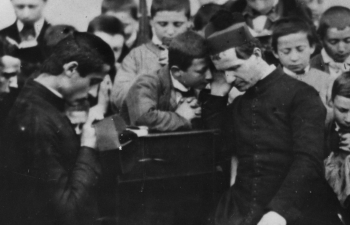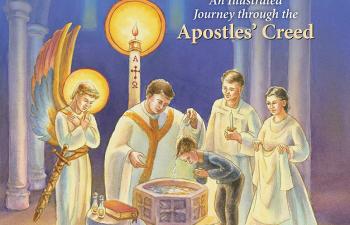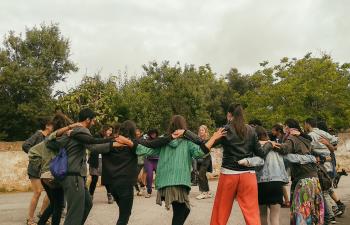Autism has captured the attention of many people through the media, and yet there remains a great deal of ignorance about it. The organization, Autism Speaks, states: Autism spectrum disorder (ASD) and autism are both general terms for a group of complex disorders of brain development. These disorders are characterized, in varying degrees, by difficulties in social interaction, verbal and nonverbal communication and repetitive behaviors.[i] For some, their knowledge of autism comes from movies and television. In 1988, Dustin Hoffman and Tom Cruise starred in Rain Man, about the relationship between two brothers. The Hoffman character, Raymond Babbit, is an autistic savant, a term which “refers to individuals with autism who have extraordinary skills not exhibited by most persons.”[ii] He has the ability to remember everything he sees and hears, although he isn't able to hold a meaningful conversation. In the mind of many people, this is the face of autism, when in fact it is a rare occurrence. The brilliant character, Sheldon Cooper, in TV’s Big Bang Theory could be autistic, although this is never stated in the series. While many of Cooper’s idiosyncrasies are exaggerated, they are present in many people with Asperger’s syndrome, a form of autism.
Asperger’s Disorder was added to the American Psychiatric Association’s Diagnostic and Statistical Manual of Mental Disorders (DSM-IV) in 1994 as a separate disorder from autism. However, there are still many professionals who consider Asperger’s Disorder a less severe form of autism. In 2013, the DSM-5 replaced Autistic Disorder, Asperger’s Disorder and other pervasive developmental disorders with the umbrella diagnosis of autism spectrum disorder.[iii]
Raymond and Sheldon demonstrate the wide spectrum of characteristics that may be present in people with autism, or “on the spectrum,” which has become the catchphrase when speaking of the disorder. However, autism is complex, which can make catechesis for persons with autism challenging. The Rain Man character is severely disabled, but there are people with autism who cannot communicate at all, and cannot function on their own in any meaningful way. So how do we catechize persons with autism? First of all, as we have said throughout this series, “our attitude must me that of Christ.” We must come to know the individual. If we are working with children or teens, we must be in conversation with parents concerning the extent of the disorder in their children. We have to be very careful not to use this information in order to label the person. The same caution can be given in schools where we have access to the student’s files. People have the ability to break out of restricting labels or stifling prognoses of their condition. It is helpful if we have a game plan, so to speak; so let us approach this question through three helpful categories.
Affective
Many people with autism do not respond to emotional stimulus the way neuro-typical people do. There can be a tremendous oversensitivity to any external stimuli, as well as emotional stimuli. Each person will demonstrate this in ways that may be unique to him or her. They may seem remote or uncaring, or they may be angry and frustrated with what we are attempting to do. Temple Grandin is possibly the world’s best-known person with autism. She demonstrated severe autism as a child, and through the efforts of her mother, some teachers, and most of all through her own work, she was able to break through many of the challenges that confined her within herself. She earned a Ph.D. in animal science and designs humane ways to slaughter cattle that will be eventually part of our diets. She thinks in pictures, and has used this ability to develop emotions that mark our humanness, especially empathy. Empathy is a mark of our humanity. We must be able to see things from another person’s perspective and to feel as they do. This is incredibly important for catechists. In her book, Thinking in Pictures, she describes her struggles to be empathetic. “For me to have empathy I have to virtually put myself in the other person’s place.” She tells us something very important: “Normal people have emotional empathy but some of them lack empathy for sensory over-sensitivity in autistic people.”[iv] We must, like Grandin, acquire empathy through an act of the will. This is true in our normal everyday lives, but especially in our lives working with people with disabilities.
Behavioral
Just as there is a wide spectrum of autism, there is a wide spectrum of behavioral issues when working with people with autism. In extreme forms of autism, the behavioral problems may prevent the person from belonging to a defined group. Catechesis may have to take place on a one-to-one basis. For those who can participate in a typical catechetical context, the catechist must come to know the person and any potential stressors. In many ways, techniques for alleviating these stressors can come from common sense. Recently, a school had a lockdown drill without warning. A child with autism was in the school. She was not prepared in advance by her teacher. The lockdown caused the student to totally “melt down,” which frightened all the students. It took months for this little girl to overcome the fear that was generated by this event. Had the teacher gone over the drill beforehand, it would have helped all of the students. This is where common sense enters in. Knowing all our students is essential. Another example was a little boy who was petrified by the crowd of students entering the building at the same time. If the child had been allowed to enter ahead of time, or wait until everybody was in place before he joined them, it would have mitigated his stress. We need to be sensitive to our students’ unique sensitivities and prepare as much for them as for the lesson itself. We also have to lead our neuro-typical students in respect and acceptance of our students who are not. Our attitude must be that of Christ! In his book, Following Ezra, Tom Fields-Meyer tells the story of his son Ezra, who has autism. The book tells the story of Ezra coming to the ultimate moment of his young life, his Bar Mitzvah, in which he would read a specific part of the Torah and then give a speech. His parents prepared him, not just for these two difficult activities but also for the whole event, including his interaction with the congregation. He was successful. One of the guests told Fields-Meyer, “Ezra wasn’t reciting the words from the scroll or from memory, but rather from a Torah that seemed to exist in his mind.”[v] Is this not our desire for all those we are leading into a personal relationship with Jesus Christ? That we really know Christ? In his speech, Ezra told the people that he was autistic, and that one of the best parts of his autism is that he has a very good memory, and in a way, the Jews were all autistic because they have very good memories about all that God has done in their lives!
Cognitive
Again the spectrum of difficulties varies. One mistake that many make, often due to the impressions left by Raymond Babbit and Sheldon Cooper, is that people with autism are all brilliant. This is not so. It may be the case for some, but others may also have learning disabilities; or the communication difficulties present with autism may prevent learning in a typical way. These problems don’t occur more often in those with autism than those who don’t. However, in autism the behavioral and affective problems may block either the acquisition or demonstration of knowledge. They may be fixated on things that block their learning: lists, colors, even crucifixes. We need to gently help them to change the channel, so to speak. The inability to read body language may keep a student with autism from following a conversation or seeing nuances that may enhance a definition. An inability to understand the humor in a situation, sarcasm, or irony could also prevent full understanding. Always try to adapt. And while we may teach something repeatedly, like how to line up for Holy Communion, it may be to no avail. When it comes to preparing persons with autism for the sacraments, the USCCB’s 1995 Guidelines for the Celebration of the Sacraments with Persons with Disabilities is very helpful. Each of these challenges call catechists to great creativity and love. As St. John Paul II wrote, “They have a right, like others of their age, to know ‘the mystery of faith.’ The greater difficulties that they encounter give greater merit to their efforts and to those of their teachers.”[vi] Sr. M. Johanna Paruch, FSGM, Ph.D, a member of the Sisters of St. Francis of the Martyr St. George, holds an MA in Religious Education from the Angelicum, and a PhD in Theology from Maryvale Institute, Birmingham, England. She currently serves as Associate Professor of Theology at Franciscan University of Steubenville. This article originally appeared on pages 38-39 of the printed edition.
Notes
This article is from The Catechetical Review (Online Edition ISSN 2379-6324) and may be copied for catechetical purposes only. It may not be reprinted in another published work without the permission of The Catechetical Review by contacting [email protected]



















